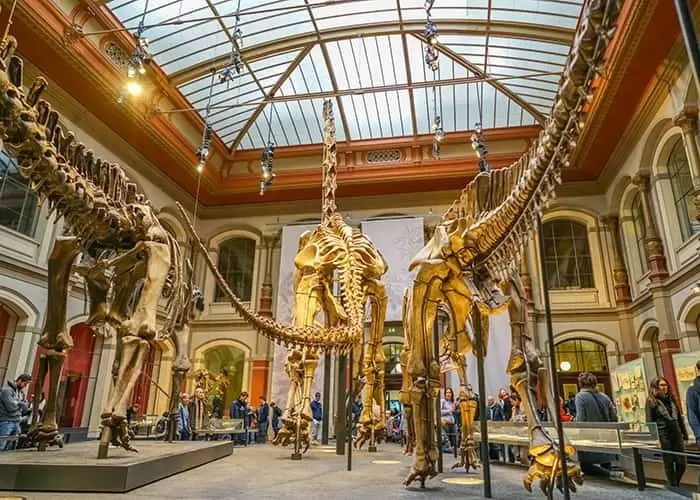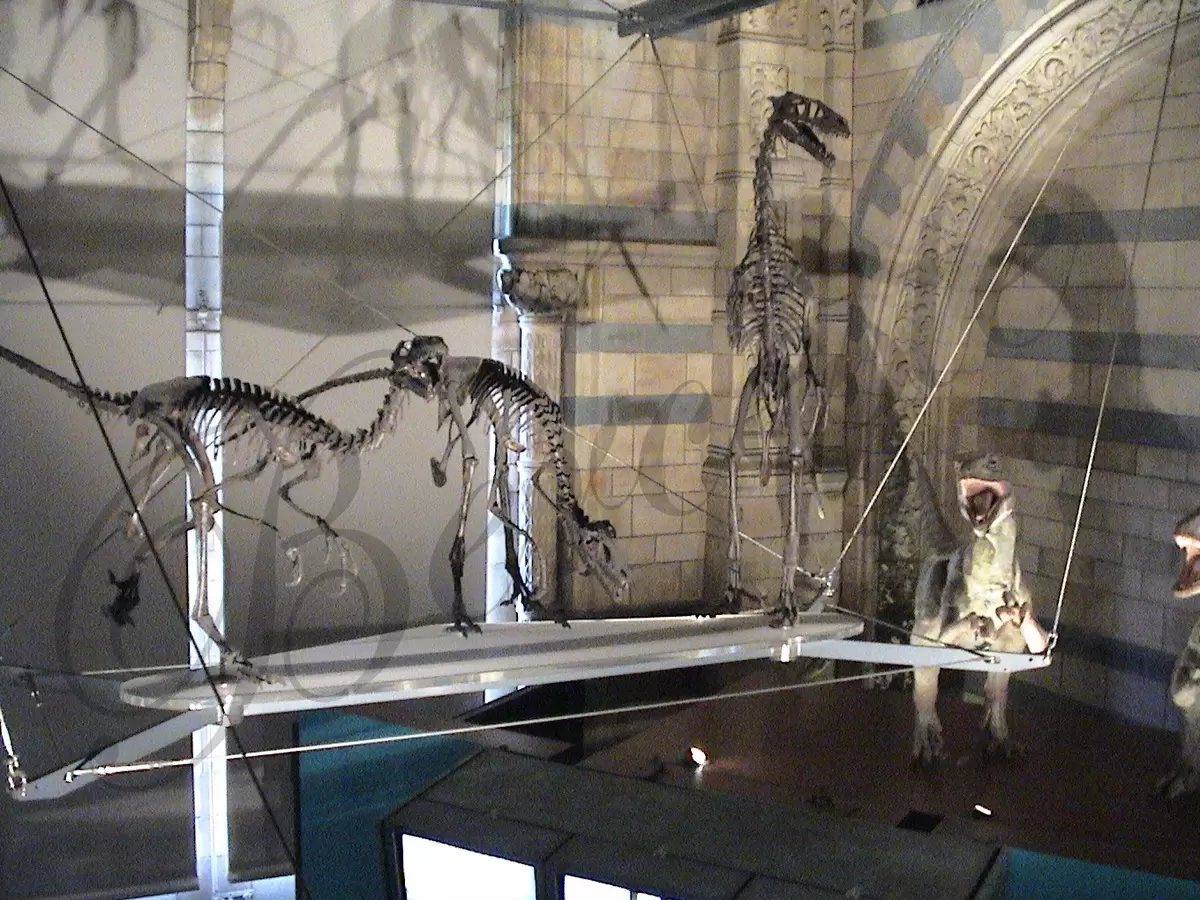There are many museums around the world for nature and history enthusiasts. However, the Natural History Museum in London is one of the best nature museums in the world. The museum, which opened in 1881, houses over 80 million specimens. Among these specimens are works displayed in many different categories such as dinosaur fossils, examples of rare species, minerals, and meteorites. Additionally, the museum offers educational and interactive experiences about natural history to visitors. The Natural History Museum is a prominent museum among nature museums worldwide and offers visitors an unforgettable experience.
Natural History Museum: What You Need to Know About the World's Best Nature Museum

There are many museums around the world for nature and history enthusiasts. However, the Natural History Museum in London is one of the best nature museums in the world. This museum offers visitors the opportunity to explore the beauty and history of nature.
The Natural History Museum was opened in 1881 and has since been considered one of the largest natural history museums in the world. The museum houses over 80 million specimens, providing information about natural history and the environment worldwide.
The museum offers visitors many different exhibitions, including exhibitions of animal species worldwide, human evolution, minerals and rocks, marine life, and many more. In addition, the museum offers many interactive experiences about natural history worldwide.
The Natural History Museum stands out not only with its exhibitions but also with its research and educational activities. The museum conducts research on natural history worldwide and incorporates this research into educational programs. Additionally, the museum offers many educational programs to help students learn more about natural history.
In conclusion, the Natural History Museum is one of the best nature museums in the world. The museum offers visitors many information and experiences about natural history. Additionally, it stands out with its research and educational activities. Therefore, it is a museum that must be visited by nature and history enthusiasts.
Natural History Museum: An Indispensable Museum for Nature Enthusiasts
The Natural History Museum, one of the most important places for nature enthusiasts, is located in London and is one of the largest natural history museums in the world. The museum has a wide collection of natural history and science subjects and offers visitors the opportunity to explore the beauty of nature.
The museum was opened in 1881 and has been visited by many visitors worldwide since then. The museum houses thousands of live specimens, fossils, minerals, and other natural history examples. In addition, there are many interactive exhibitions and events in the museum.
The museum not only provides information about natural history to visitors but also creates awareness about the conservation and sustainability of nature. The museum is also considered an important resource for research in natural history and science subjects.
The Natural History Museum offers visitors many different experiences. Visitors can explore special exhibitions, live shows, and events held in the museum. In addition, there are many interactive exhibitions in the museum. Visitors can also participate in special tours organized in the museum.
The museum is an indispensable place for nature enthusiasts. Visitors not only learn about natural history but also discover the beauty of nature. The Natural History Museum is a leading museum in natural history visited by many visitors worldwide.
The World's Best Natural History Museum: Interesting Exhibitions of the Natural History Museum

The Natural History Museum, located in London, is one of the best nature museums in the world. The museum was opened in 1881 and has been visited by millions of visitors since then. The museum has a wide collection on natural history and science topics and offers interesting and educational exhibitions to visitors.
One of the museum's most interesting exhibitions is the world's largest dinosaur exhibition. The exhibition displays fossils of giant dinosaurs that lived 80 million years ago. The exhibition provides visitors with information about the lifestyle, eating habits, and extinction of dinosaurs.
Another interesting exhibition at the museum is about human evolution. The exhibition provides information about the evolution process of humans and how human species developed. The exhibition helps visitors understand the place of humans on earth.
Other exhibitions at the museum include the evolution of animals, natural disasters on our planet, marine life, and butterflies. The exhibitions offer visitors a wide range of information on natural history and science topics.
The Natural History Museum is a world-renowned museum and offers an educational and interesting experience for visitors. The museum is a must-visit place for anyone interested in natural history and science topics.
The Most Interesting Facts You Can Learn About Natural History Museum

Natural history is a branch of science that studies the history and evolution of the natural world. Scientists working in this field investigate the evolution processes of living beings from prehistoric times to the present day and explore various aspects of the natural world. To discover the most interesting information about natural history, you can take a look at natural history museums around the world.
The most famous of these is the Natural History Museum in London. This museum is one of the largest natural history museums in the world and contains over 80 million specimens. The museum displays interesting examples such as dinosaur fossils, giant whale skeletons, rare bird species, and many more.
Natural history museums are important not only for their exhibitions but also for their research and educational activities. Scientists working in museums investigate various aspects of the natural world and organize educational programs to convey this knowledge to the general public.
Interesting information that can be learned in natural history museums includes the evolution processes of living beings, species that lived in prehistoric times, various ecosystems of the natural world, and many more topics. These museums are a great opportunity to explore the beauty and diversity of the natural world.
In conclusion, natural history museums provide a great resource for exploring the history and evolution of the natural world. The interesting information that can be learned in these museums will help you better understand the beauty and diversity of the natural world. Therefore, visiting natural history museums is a great way to discover the secrets of the natural world.
Natural History Museum: A Great Place for Children to Instill Love for Nature

Love for nature is an important concept that strengthens people's connections with their natural environment and encourages them to protect it. Therefore, the Natural History Museum, which is a wonderful place for children to instill a love for nature, offers visitors the opportunity to explore and understand the natural world.
The Natural History Museum is a resource center for anyone who wants to learn about natural history and the environment worldwide. The museum is full of natural history examples such as fossils, minerals, animals, and plants that date back thousands of years. These examples help visitors better understand the natural world.
The museum offers many activities designed especially for children. Educational games about natural history, interactive exhibits, and a living space filled with live animals allow children to learn and explore the natural world. In addition, museum staff provide children with information about the natural world and encourage them to protect their natural environment.
The Natural History Museum is a great resource center for anyone who wants to learn about the natural world. Activities designed especially for children offer a great opportunity to instill a love for nature. The museum is a place that must be visited to understand the beauty and importance of the natural world.

Comments